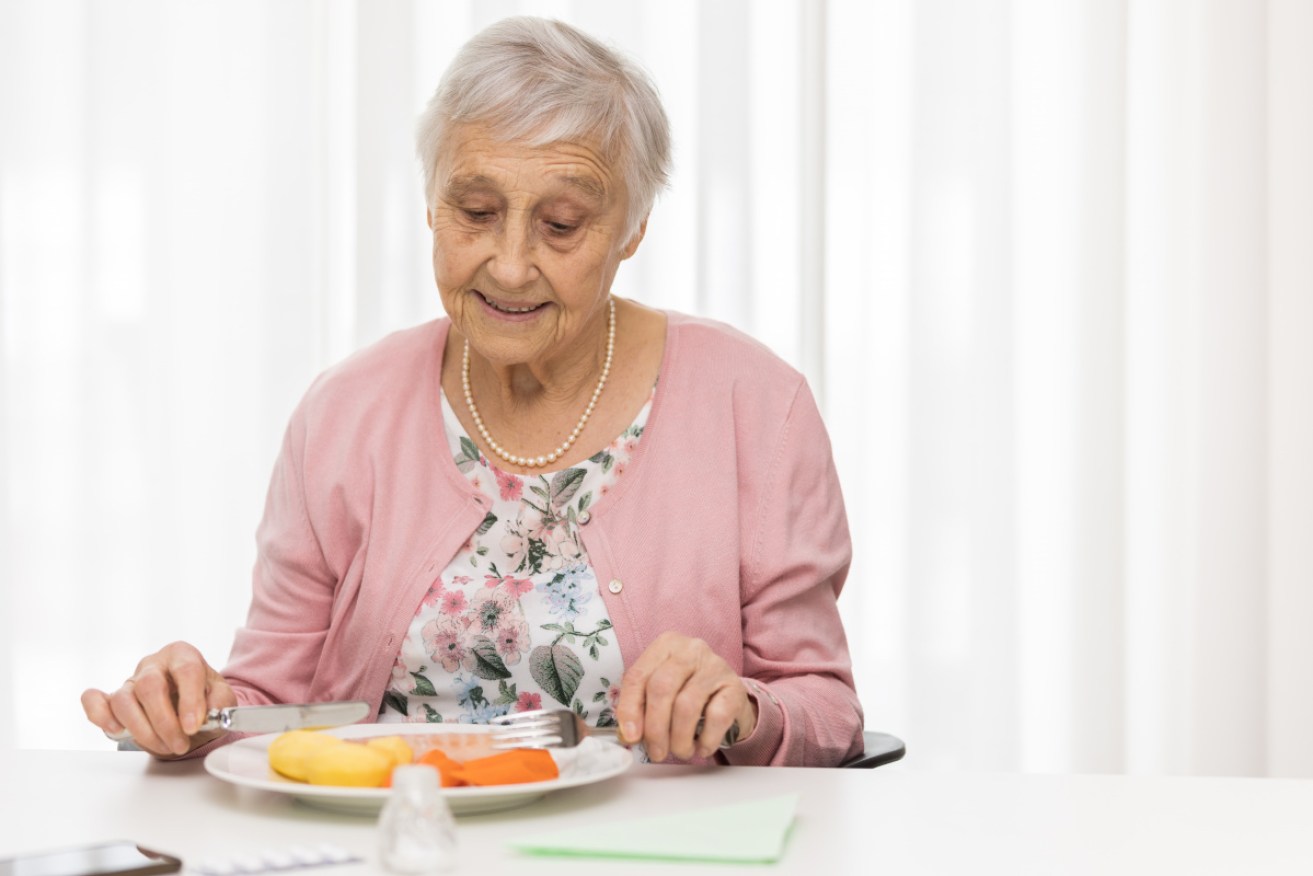Older women who eat alone face increased incidence of heart disease: Study


Eating alone tends to mean eating faster and with less attention paid to nutrition. Photo: Getty
Up until menopause, women are thought to be ‘protected’ from cardiovascular disease (CVD) because of estrogen, which helps to increase blood flow.
Estrogen also serves to keep blood triglycerides low, increases HDL or ‘good’ cholesterol and lowers LDL or ‘bad’ cholesterol levels.
With menopause, estrogen levels drop and women become more at risk of CVD than men.
Putting it another way, CVD develops seven to 10 years later in women than in men. According to Heart Research Australia, the majority of women don’t realise CVD is their leading cause of death.
There are good reasons for this: women tend to develop symptoms at a much later stage in the illness, their symptoms are often vague, and some diagnostic tests are less accurate in women than men.
Because of these differences in clinical presentation of CVD in women lead to less aggressive treatment strategies and a lower representation of women in clinical trials.
In short: CVD in women is complicated, even confounding.
A new study suggests eating alone contribute to an increased risk of heart disease in older women.
‘Eating alone’ tells a complex story
The idea that eating alone is a potential danger for heart health isn’t new.
Previous research from 2017 found that “a higher frequency of eating alone is associated with a higher risk of abdominal obesity and elevated blood pressure”.
One reason for this is that when people eat alone, they tend to eat faster – which, according to a 2017 study out of Japan, is associated with a higher risk of heart disease, diabetes, and stroke.
Routinely eating alone is also a risk factor for depression, also linked with an increased risk of CVD.
The new study, out of Korea, involved nearly 600 women older than 65. The researchers compared the health and eating behaviours of older women who routinely ate alone with those who shared meals with others – and the prevalence of CVD and its risk factors in both groups.
The researchers found that older women who ate alone had poorer understanding of nutrition – and tended to be widows with lower incomes.
These older women “had lower intakes of energy, carbohydrates, dietary fiber, sodium, and potassium than those who ate with others”.
Angina and diet
In addition, older women eating alone were 2.58 times more likely to have angina – chest pain caused by reduced blood flow to the heart and a symptom of coronary artery disease.
The study was published by the North American Menopause Society. Dr Stephanie Faubion, the society’s medical director, in a prepared statement said:
“This study shows that older women who eat alone are more likely to have symptomatic heart disease. They are also more likely to be widowed and to have lower incomes and poorer nutritional intake.”
Dr Faubion said the results weren’t surprising, given that lower socioeconomic status and social isolation contribute to lower quality of life, greater rates of depression, and poorer health.
“Finding ways for older women who are socially isolated to engage and create meaningful social ties may not only improve their nutrition but also their overall health while simultaneously reducing healthcare costs,” he said.








